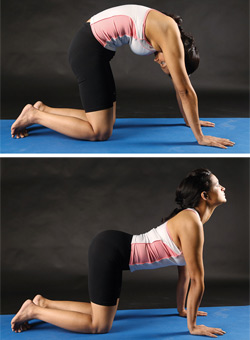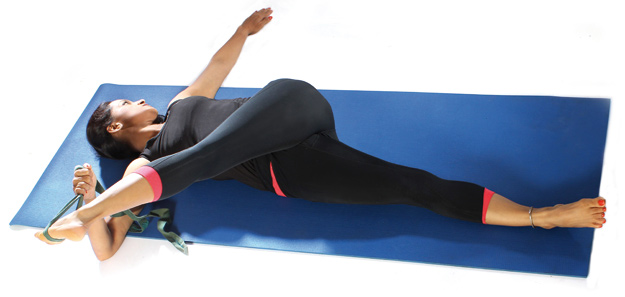Sciatica is a condition where shooting pain starts at the lower back and moves down to the leg. One of the main culprits leading to this is Postural Misalignment—a gift of our advanced lifestyle.
Subtle triggers leading to postural misalignment
- Long hours of sitting on a chair—not sitting upright, sitting in a way that one hip is constantly more stressed than the other, sitting for hours without movement, tilted sitting or sitting on a soft sofa
- Driving for long—sitting far back from the wheel or stretching too much for reaching the pedal
- Lifting heavy weights casually or with undue stress on the wrong muscles
- Bending forward abruptly to pick up something from the floor
- Poor posture while working on computers continuously
- Sitting on a heavy wallet in the back pocket [though credit cards have taken care of this problem to some extent, constantly sitting on a wallet even without much stuff in it can lead to sciatica]
- Sleeping on a very soft mattress as well as sleeping in a wrong position.
These triggers have made sciatica, which was not heard of a till few decades ago, a common problem today.
We need to approach this problem in two steps
Step 1: tackle the issue in its chronic state and then restore your body to normalcy
Step 2: work on strengthening the back and the core, as both are intricately and proportionally related
The following five postures can help correct postural misalignment and ease out this chronic condition:
Matsya Kridasana
- Lie down on your tummy with your legs stretched out and your head turned to one side [look to the left side]. Place your palms over each other and rest the right cheek on your hands.
- Bend your left knee; bring it as close to the chest as comfortably possible for you. Move the right side of your chest on the floor by sliding your right arm out of the way.
 3. Be in the posture for 3 – 5 minutes with normal breathing; change the side and follow the same sequence.
3. Be in the posture for 3 – 5 minutes with normal breathing; change the side and follow the same sequence.
 Marjarasana
Marjarasana
- Get down on your fours [the palms and knees on the floor]; palms in line with the shoulders; knees in line with the thighs; toes stretching out or curled in.
- Inhale and start stretching your spine downwards, your neck will be outstretched and your chin will point upwards.
- Exhale and get your chin to the chest, drop your hips down towards the floor and push your upper back as high as possible.
- Continue to perform the movements alternatively for 5 – 10 rounds.
- Relax.
 Vyagrasana
Vyagrasana
- Get down on your fours; stretch your left leg behind so that it is parallel to the floor; bend your left knee and take the foot up in the air; tilt your head behind. You are trying to get your head and toes close to each other.
- Exhale and bring your head and left knee close to your chest.
- Repeat five rounds and change to the other side.
Pawanmuktasana
- Lie down on your back.
- Bend your right knee and place your right thigh on the chest.
- Wrap your arms around your bent leg.
 4. Hold the position for 20 – 30 seconds with normal breathing.
4. Hold the position for 20 – 30 seconds with normal breathing.
5. Release and repeat on the other side.
You can choose to bend your other knee and place your foot on the floor in case of discomfort.
Supta Padanghusthasana variation
- Lie down on your back.
- Raise your left leg up towards the ceiling and move it to the right side.

- Turn your head to the left.
- You can hold your left leg with the right hand or can use a belt or scarf to keep your leg in place.
- Repeat on the other side for the same length of time.
Note
Slowly keep flexing your toes in and stretch your heel out to optimise the stretch at the back of the leg.
It is important to assess the severity of the problem first. If you are able to perform these postures without much discomfort, practice 3 – 5 rounds of these 2 – 3 times a day for 15 days. This should help settle the pain.
Once you are healed from the chronic pain of sciatica, it is advisable to work on preventing the recurrence of the same. Asanas like Ardha Shalbhasana, Bhujangasana, Ushtrasana, Dhanurasana could help prevent relapse.
You can watch videos of all these asanas on Shammi’s YouTube channel: http://www.youtube.com/user/homeyoga123
This article was first published in the May 2016 issue of Complete Wellbeing.
 Spot an error in this article? A typo maybe? Or an incorrect source? Let us know!
Spot an error in this article? A typo maybe? Or an incorrect source? Let us know!
